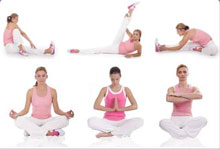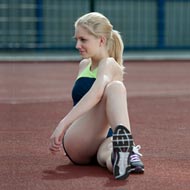- Raja yoga
- Yoga Stretches
- Jivamukti Yoga Poses
- Yoga Tree Pose
- Sun and Moon Yoga
- Wind Removing Pose
- Hare Pose
- Accomplished Pose
- Urdhva Mukha Pinch Mayurasana
- Revolved Abdomen Pose
- Raised Foot Pose
- Scorpion Pose
- Butterfly Pose
- Half Tortoise Pose
- Revolved Twist
- Balancing Stick Pose
- Cat Pose
- Supported Shoulderstand
- Crane Pose
- Handstand
- Happy Baby Pose
- Firefly Pose
- Scale Pose
- Side Plank Pose
- Upward Facing Two-Foot Staff Pose
- Reclining Big Toe Pose
- Stick Pose
- Revolved Head-to-Knee Pose
- Full Boat Pose
- Upward Extended Feet Pose
- Yoga arm balance poses
- Core Yoga
- Inversion Yoga Poses
- Seated And Twist Yoga
- Cobbler Pose
- Seated Wide Angle Pose
- The Compass Pose
- Half Crow Pose
- Bound Half Moon Pose
- Lotus Pose
- Reverse Warrior Pose
- Fixed Firm Pose
- Back-bend Poses
- Forward bend Poses
- Sarvangasana
- Ashtanga Yoga Poses
- Warm up poses
- Seated Poses
- Seated Forward Bends
- Chair Poses
- Standing Poses
- Standing Balancing poses
- Yoga Asanas
- Hatha Yoga Asanas
- Yoga Postures Online
- Partner Yoga Poses
- Anusara Yoga Poses
- Advanced Yoga poses
- Restorative Yoga Poses
- Kids Yoga Poses
- Beginning Yoga Postures
Horse Pose - Vatayanasana
The Horse Pose or Vatayanasana is an intermediate level pose and it should not be attempted by beginners. This pose looks like the face of a horse, and hence it derives its name.
It calls for great flexibility and strength in the ankle region and is an excellent therapy for the neck, spine, waist, knees, calves and ankles.
How It’s Done
- Stand up straight and bend the right leg upwards at the knee so that the heel of your right foot is touching your groin and the toes are placed along the base of your left thigh.
- Now bend your left knee so as to lower your body till the folded right knee is resting on the ground.
- You are now standing on your left foot and right knee.
- Raise both your arms and bend your elbows so that your forearms are pointing upwards.
- Keep your left elbow in the crook of your right elbow and entwine your right forearm around your lower left arm.
- The palms of your hands should be together in the namaskar position.
- Hold this pose for 30 to 60 seconds and then return to your normal position.
- Repeat the pose for the opposite side, standing on your right foot and left knee.
- This completes one set. Repeat the set twice.
Hints
Many people initially struggle with this pose. Your hips require a certain degree of flexibility. Without this flexibility you may find it difficult to maintain the position of the folded leg without the opposite hip jutting out. This will throw your spine out of alignment.
To help you attain the pose, try to work up to Vatayanasana through preparatory poses such as Ardha Baddha Padmottanasana or the Half Bound Lotus Pose. This will help you keep one leg in the Lotus pose and perform another action with the other leg. Garudasana or the Eagle Pose can help you to keep the ends of your hip aligned with each other. It will also help you to stretch and condition your ankles and calf muscles, making it easier for you to attain the Horse Pose.
Precautions
While attempting this pose take the following precautions:
- Take great care while attempting this pose lest you cause yourself an injury.
- If you are attempting this pose for the first time then do so under the supervision of an experienced instructor.
- Do not attempt this pose if you have a problem with your knees.
- Keep your hips drawn under you. If you cannot do this, then you may compress your sacroiliac joint.
Benefits
According to Iyengar, Vatayanasana promotes the circulation of blood throughout the hip region and can help to correct minor deformities in the hips and thighs. Other benefits include:
- Removes stiffness in the sacroiliac joint.
- Reduces stiffness and pain associated with arthritis.
- Helpful in cases of inguinal and femoral hernia.
- Reduces cramping in the thigh region.
 Find Pose
Find Pose

